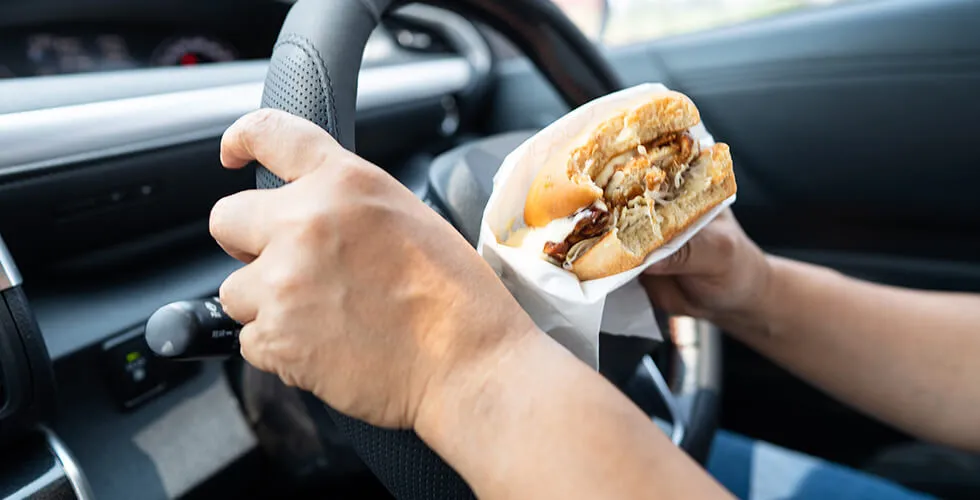
The longer people sit in traffic, the more likely they are to grab fast food instead of cooking a healthier meal at home. A recent study from the University of Illinois Urbana-Champaign found that unexpected traffic slowdowns lead to a surge in fast food visits, especially around dinnertime. For every 30-second delay per mile, fast food consumption increased by 1%—a seemingly small figure that translates to 1.2 million extra fast food meals per year in Los Angeles alone.
Fast food is notoriously high in ultra-processed ingredients, unhealthy fats, sugar, and sodium, all of which contribute to obesity, heart disease, high blood pressure, and even depression. Yet, when people are stuck in gridlock after a long workday, they often feel too exhausted to cook and opt for the convenience of fast food instead.
How to Navigate a Busy Life and Roadway in a Healthier Way
While fixing traffic congestion is a long-term challenge, there are practical ways to break the cycle of stress and unhealthy eating:
- Plan Ahead: Meal prep on weekends or use slow cookers to have food ready when you get home.
- Keep Healthy Snacks: Stash nuts, fruits, or protein bars in your car to curb hunger and avoid drive-thru temptations.
- Leverage Technology: Use navigation apps to avoid high-traffic areas and reduce commute times.
- Opt for Remote Work: If possible, work from home a few days a week to cut down on commuting stress.
- Choose Healthier Fast Food: If stopping is unavoidable, go for grilled protein, salads, or smaller portions.
Traffic congestion isn’t just an inconvenience – it’s shaping our daily habits, including what we eat. By recognizing the link between time scarcity, stress, and food choices, individuals and policymakers alike can work toward solutions that promote both healthier lifestyles.

